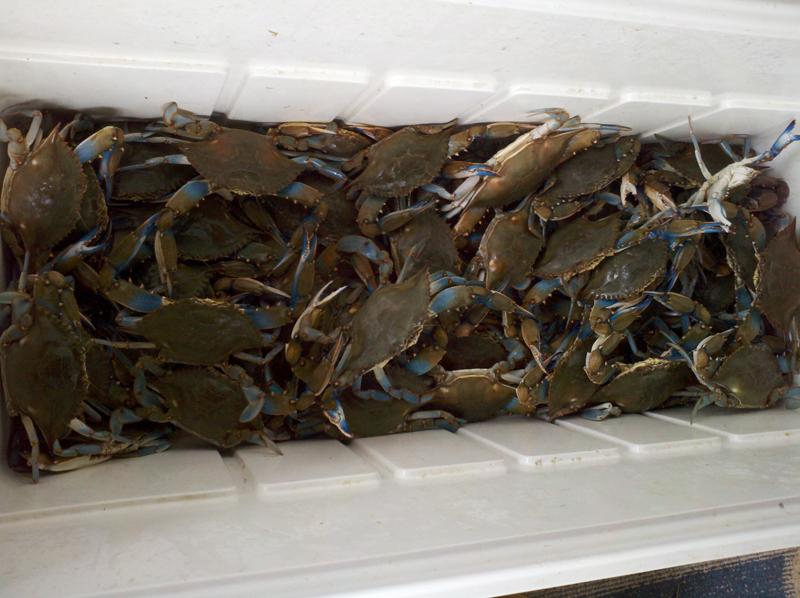Most crabbers put away their gear long before Thanksgiving, but truth be told there’s often good crabbing to enjoy right through the month. In the middle and lower portions of the Chesapeake, the reason we stop hearing about them has more to do with a lack of effort than a lack of crabs. You’ll need to adjust your tactics a hair but if you bundle up and get some chicken necks, you’ll be in for a meal that no turkey can ever hope to compare with.

- The toughest part of November crabbing is securing a bait supply. Most tackle shops stop ordering chicken necks in October as demand tapers off and run out at some point during or before November. So plan ahead, and stock the freezer asap. If you end up desperate to find necks, you can always resort to the grocery store. They don’t all have them all the time but if you hit three or four you’ll eventually find some necks.
- Look to find the crabs deep. Consider 10 feet the minimum, and often you’ll need to work in 12 to 15 feet to find them. If you run a trot line that’s set up for shallow water and has relatively short anchor lines you may need to lengthen them, or risk dragging the anchor a bit every time you pick up the line.
- If you’re using snap traps, the method is status quo. But if you’re running a trot line this deep you may suffer from numerous drop-offs, and at times will notice your baits are being chewed up even though you’re not seeing any crabs when those baits reach the surface. In this case you’ll need to slow down and possibly shift into neutral every so often to reduce speed to a crawl, so they don’t drop off.
Will you catch as many crabs as you did back in September? Heck no. But if you work at it putting together a catch of a dozen or two is well within reach all the way through November, most seasons.